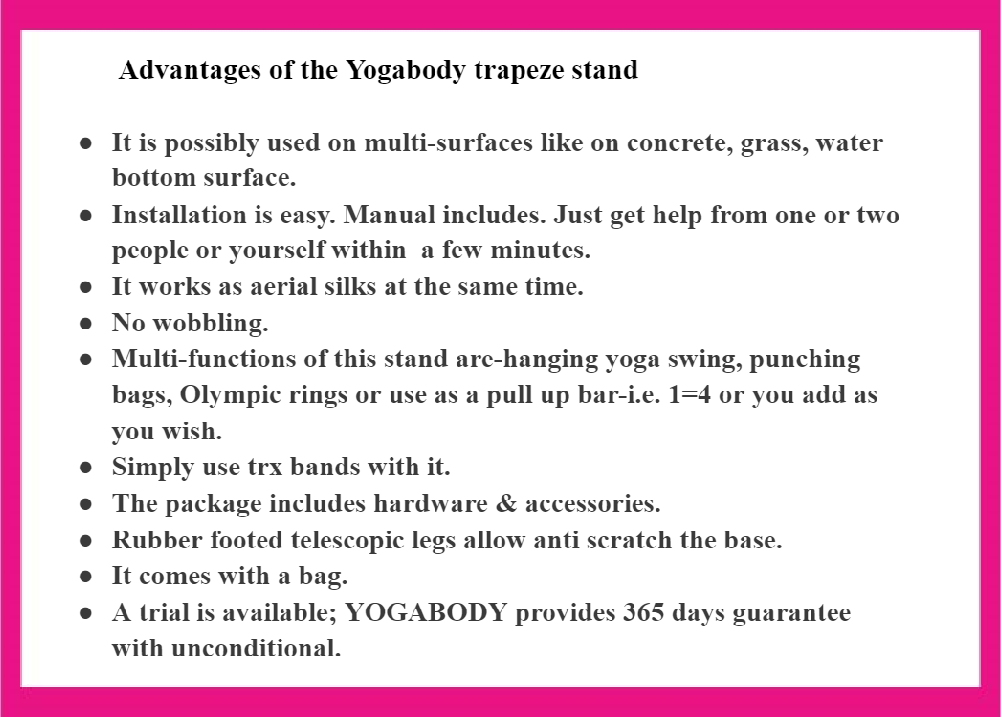Mate, you are here because you already know something about the Yogabody trapeze stand, isn’t it? Indeed, Yoga body yoga trapeze stands are a trusted yoga stand that is becoming popular day by day. There are many considerable factors why you should pick it. So, let’s explore it.
What is yoga trapeze swing and stand?
Yoga swing is the main aerial yoga prop that allows practitioners to do antigravity poses in the mid-air. To know it exactly check our yoga trapeze guide.
Indeed, yoga trapeze is now a global buzzing word in which demand is increasing. The main concept around this word is inversion exercise and antigravity poses.
This means, during traditional yoga exercises, these poses are difficult and sometimes impossible also. But with the help of yoga trapeze stands diy, it becomes very easy to perform such kinds of poses!
Why is Yogabody’s Yoga stand unique?
There are many yoga stands in the market. Out of them, there are many reasons why you should Yogabody hammock stand.
First of all, it’s a complete yoga swing stand package.
Secondly, it’s durable and quality material. Later on, we’ll know further about this multi-purpose swing stand.
The main features of the Yogabody swing stand
We told you earlier that it is a multi-purpose yoga stand. After reviewing the product we find the following particulars about it.

1. Rock solid design: Out of many talked features, we particularly focus on the very simple installation design for your ultimate swing stand. Besides, yoga stand, we can easily use this as punching bags, pull-up bar, and Olympic rings as well.
2. Quality material: The main stand and included screws are rock-solid and made up of aluminum alloy material. Indeed, it offers proper strength and ductility. This is anti-wobbling.
3. Convenient: There are easy three steps involved for the yoga trapeze setup and this trapeze stand simultaneously. It requires one or a maximum of two persons to perfectly install the stand.
4. Multi-surface usability: The most notable feature of this stand is its multi-surface functionality. This means it works well indoors and outdoors similarly. No matter, if your preferred surface is under shallow water, grass, concrete or uneven stone! Cause, it has options for height adjustability and multi-ground fitting legs.
5. Manual/Tutorial: Another notable feature of the Yoga Body brand is its illustrated video tutorial. You may feel encouraged that every Yogabody video has hundreds of views. If you buy a yoga trapeze stand on Amazon, they’ll provide you with premium tutorials.
Disadvantages
Every manufacturing product has pros and cons. Yoga body doesn’t also provide 100% required positive sides. Out of those few limitations, the following are mentionable.
- It is not height adjustable. This means, you need to add extra poles to heighten or, you can use yoga swing extension straps to customize your height.
